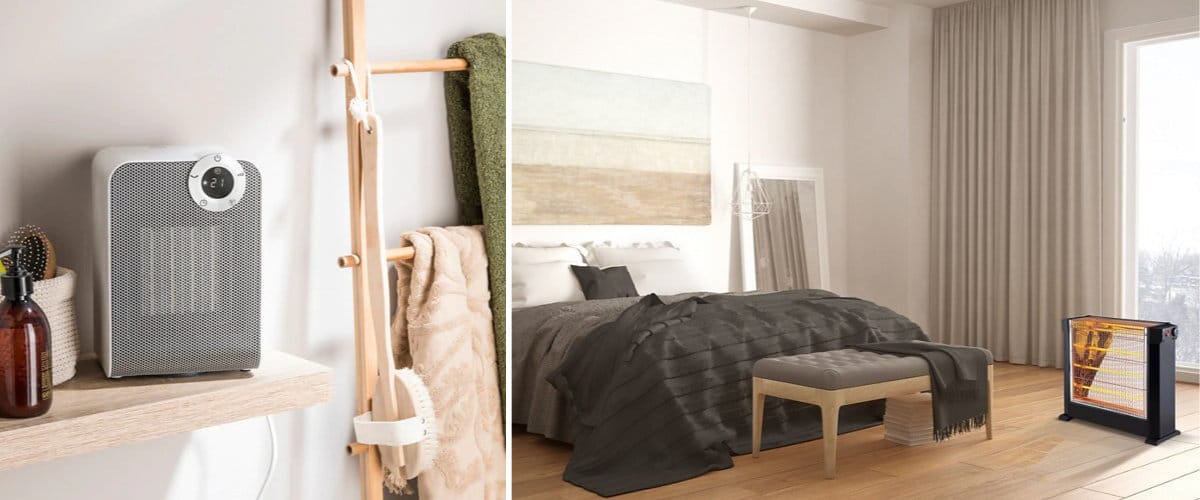
Meteorologists have announced the drop in temperatures for this week. Who have not yet turned on the heating we will probably have to do it this week. And those who do not have heating will find electric stoves and heaters a solution for heating the rooms.
Electric stoves and heaters are a great ally for all those who do not have heating. They allow to heat the rooms more or less quickly and without spending too much money. Not at least in your purchase, because these heaters raise the temperature of a room as fast as the electric bill.
Advantages and disadvantages
Light, easy to transport, inexpensive ... electric heaters have everything to become great allies in the home. They have the ability to heat us and / or heat the rooms quickly, but these are not their only advantages.
- They are portable, easy to transport and move around the different rooms.
- They heat up quickly. They allow heating small spaces almost instantly.
- They serve as support for large rooms combined with other heating systems when the cold is extreme.
- They are perfect to combat the cold in regions with a temperate climate in which large heating investments are not essential.
- Its maintenance is simple.
The advantages are more numerous than its disadvantages if we know how to choose the right heater. Nevertheless, energy expenditure that they entail can be inconvenient if we need to use them daily and for long periods of time during winter.
Types of electric heaters
It can be difficult choose the right heater. There are different types and we may not all be suitable for all rooms. In Bezzia We help you with some concepts so that you can choose a model that fulfills its purpose in the most effective way.
Air heater or fan heater
Air heaters are electric heaters that are assisted by a ventilation system to distribute the hot air produced. They are very practical when you want to heat a small space in a short time, but they carry a significant electrical consumption. You will find them with electrical resistance and ceramic.
- With electrical resistance. They use an electrical resistance to heat the material of which they are composed, on which the lower or higher thermal inertia will depend.
- Ceramics They include a ceramic resistance that better retains heat and helps to consume less energy. They dry out the environment less, since they need less oxygen to emit the same amount of heat and are more durable.

1. Instant Comfort Compact 2000W by Rowenta 2. Warmic - 1500W Ceramic Heater by Ikohs
Electric convector
Convectors are electrical devices that directly heat the air that passes through resistors that are heated using electrical current. It takes them longer to heat a room as their system does not have forced ventilation, but can be used for hours Most models incorporate a device that protects the appliance from overheating.

1. EVERWARM GPH1500 Wifi from Ikohs 2. Delonghi 0113128401 2000 w white
Suitable for heating bedrooms, its use in bathrooms is not advisable. And care should be taken with children as it is easy to burn when they are in full power since the normally metallic coating reaches high temperatures.
Halogen heaters
Unlike the previous options, halogen stoves do not heat the air around them but rather heat up nearby objects In a direct way. They are very practical if our desire is to warm ourselves when we are sitting on the sofa, but not so much if we want to warm the air in the room. Some of the benefits of this type of system is that the air does not circulate continuously, so it does not dry out the environment so much or raise dust.

1. Olimpia Splendid 99545 Solaria Evo 1200W, 2. Delonghi Radia S 1500 w gray
Oil radiators
Oil radiators are made of metal and are filled with oil that is heated by electrical resistance. They can be used for many hours, are quiet and emit even heat. Nevertheless, they take longer to heat the room and they are heavier (although it usually has wheels to move it) than the rest of the options.
A heater for every room
Not all heaters work in every room. And although we have already mentioned among the characteristics the usual uses of each type, we want to highlight which are in general the most appropriate heaters for the room, bathroom and other spaces.
- Room. For a room of around 10 m2, a thermoconvector or a ceramic heater if we want to heat the room for half an hour before going to bed.
- Bathroom or kitchen. For rooms with high humidity levels, the ideal is a specific air heater for humid areas with protection against dripping water.
- Living room. A thermoconvector or oil radiator to keep the room warm or a halogen stove to warm you on the sofa and to support other systems.
- Garages and basements. A forced air system with frost protection for specific moments.
